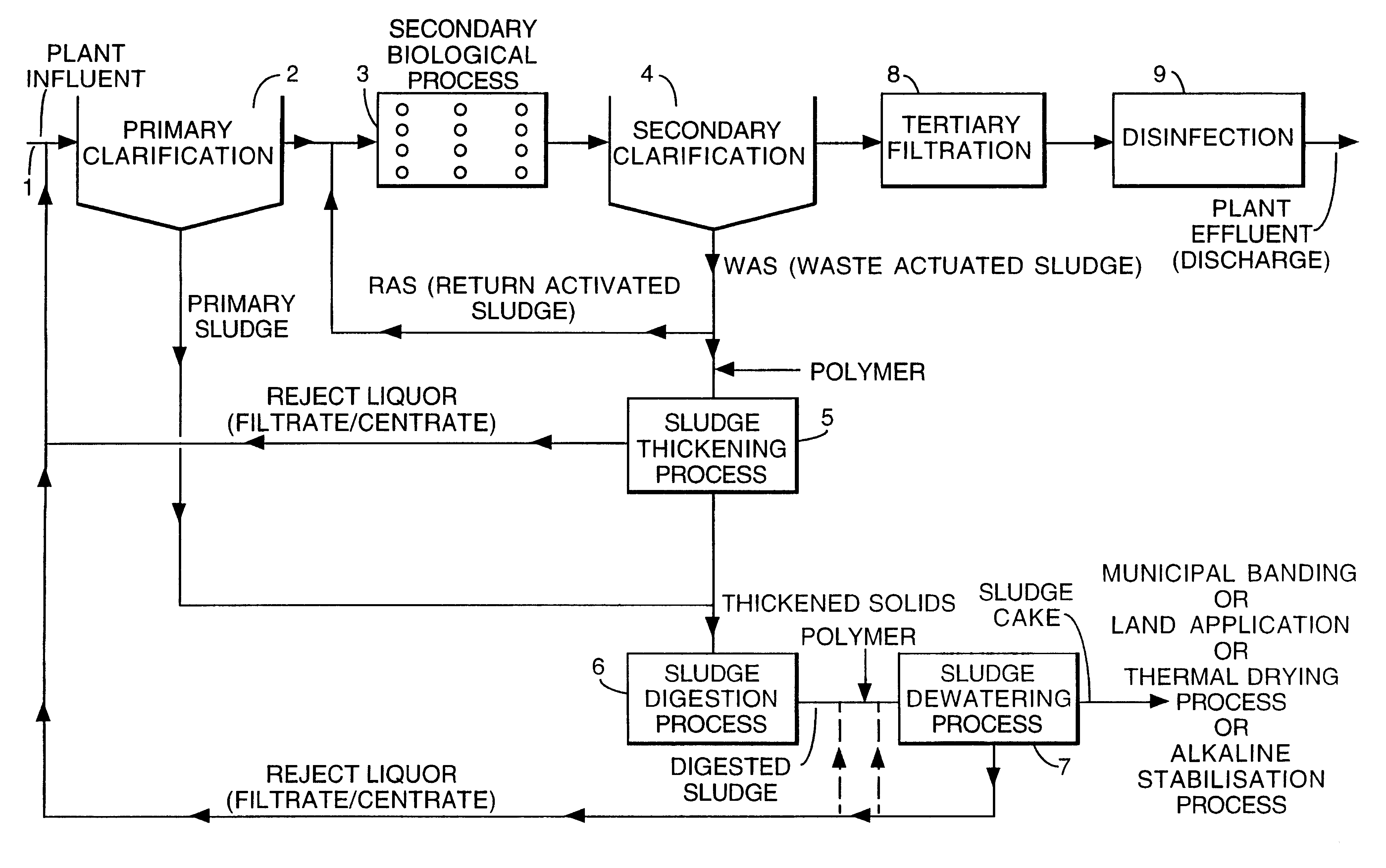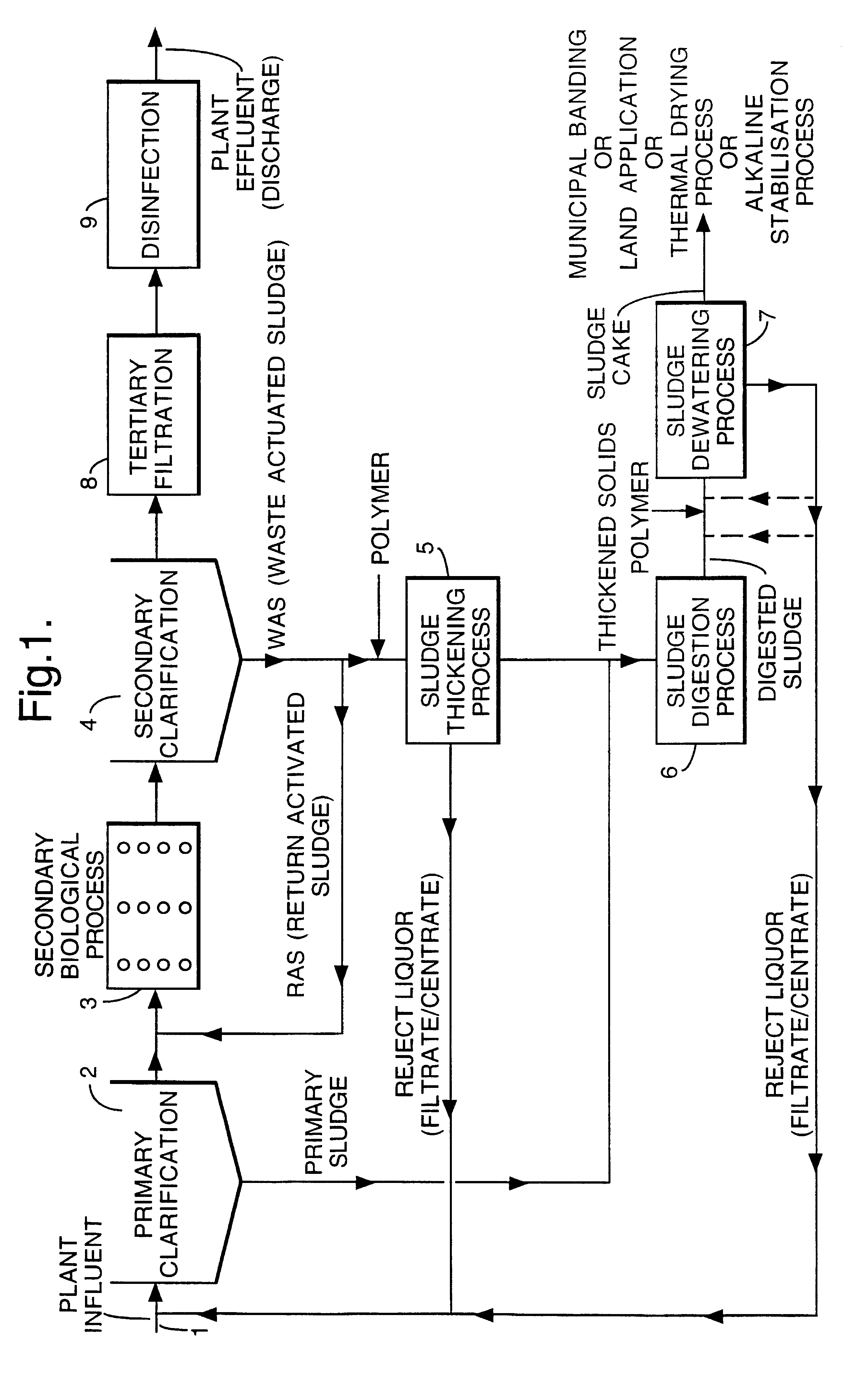Dewatering of sewage sludge
a technology of sewage sludge and dewatering, which is applied in the direction of filtration separation, multi-stage water/sewage treatment, separation process, etc., can solve the problems of deterioration of performance, excess polymer may remain in the reject, and interfere with the bridging flocculation performan
- Summary
- Abstract
- Description
- Claims
- Application Information
AI Technical Summary
Benefits of technology
Problems solved by technology
Method used
Image
Examples
example 1
A mixture of primary and secondary sludge was being pumped at 150 gallons per minute along a sludge line to a centrifugal dewatering apparatus, with the addition of 25 gallons per minute of potable water to the sludge line so as to reduce the viscosity of the sludge and with the addition as solution of 22.6 pounds polymer per dry ton of sludge as flocculant. The polymer was a copolymer of acrylamide and dialkylaminoalkyl acrylate quaternary salt having IV in the range 6 to 12. The amount of the polymer had been optimised so as to provide cake solids which, on a general basis, were about 18 to 20% and good centrate clarity. 22 gallons per minute of the centrate were then recycled into the sludge line as a replacement for the 25 gallons per minute potable water and the amount of polymer was reduced to about 15 pounds, a reduction of almost 30%. Cake solids dropped from a value of about 20% immediately before the change to about 18% and the centrate clarity was excellent. The recycle w...
example 2
Dewatering was being carried out on a mixture of primary and secondary sludge having a solids content of around 5 to 6% using dewatering plant in which the dewatering apparatus was a belt press. The process was operating under conditions which the plant considered to be optimum, utilising no dilution water but the addition of 4.8 pounds per dry ton of a high molecular weight cationic polymeric flocculant added as a solution.
Trials were conducted on three consecutive days, and in each instance the trial consisted of operating under optimum conditions without dilution water or recycle of filtrate followed by recycle of filtrate (in amounts of around 17 to 21%) at the same or decreased polymer dosage, and the cake solids was observed. In each instance the filtrate clarity was also observed and was maintained acceptable throughout. The recycle of filtrate was made to the suction side of the sludge pump. The results are set out in the following table.
PUM
| Property | Measurement | Unit |
|---|---|---|
| volume | aaaaa | aaaaa |
| flow rate | aaaaa | aaaaa |
| suction | aaaaa | aaaaa |
Abstract
Description
Claims
Application Information
 Login to View More
Login to View More - R&D
- Intellectual Property
- Life Sciences
- Materials
- Tech Scout
- Unparalleled Data Quality
- Higher Quality Content
- 60% Fewer Hallucinations
Browse by: Latest US Patents, China's latest patents, Technical Efficacy Thesaurus, Application Domain, Technology Topic, Popular Technical Reports.
© 2025 PatSnap. All rights reserved.Legal|Privacy policy|Modern Slavery Act Transparency Statement|Sitemap|About US| Contact US: help@patsnap.com



